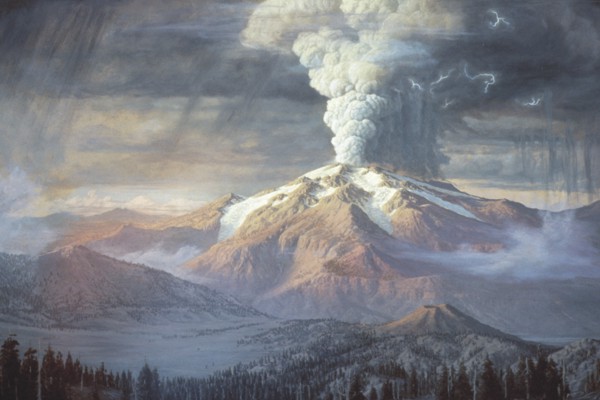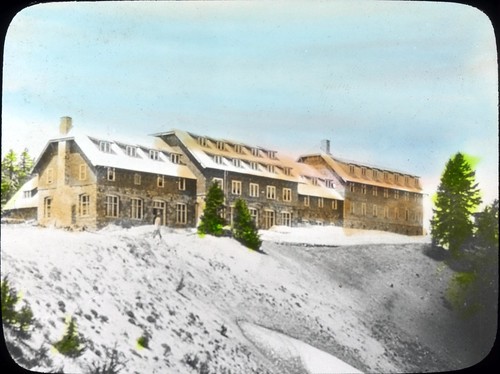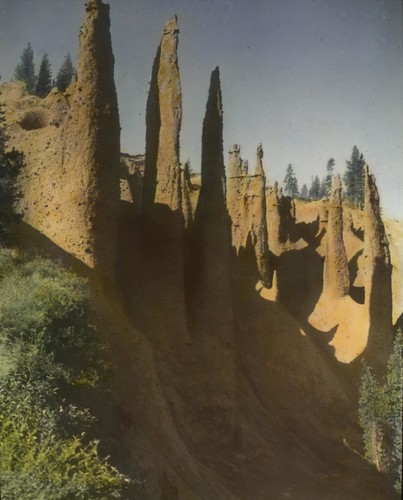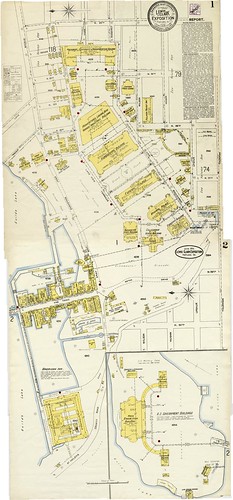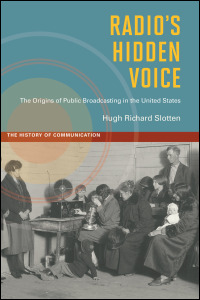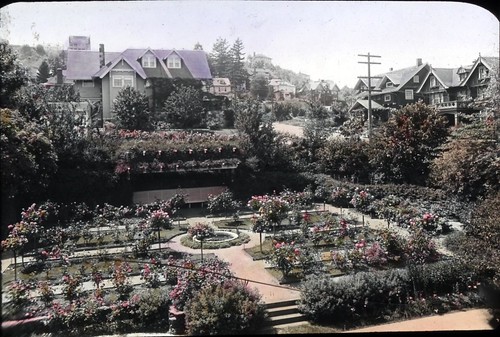Who can resist this one? Straight from the pages of the Visual Instruction Department lecture booklets comes the Story of Mount Mazama! Sit back and enjoy this short tale…
“Listen to the startling story in which geology gives us a picture of creation days in this mysterious region – the story of Mt. Mazama.Once a great mountain reared a smoking peak many thousands of feet above the present peaceful level of Crater Lake. Away to the northward stood other volcanoes – Baker, Rainier, Adams, St. Helens, Hood, Jefferson, and noble Mt. Multnomah which towered above the present region of the Three Sisters, while to the southward were Shasta and Lassen, all of which helped build the Cascade Mountains. Most of these old volcanoes stand today quiet and cold in their shining armor of snow and ice – but Multnomah and Mazama are missing.
Evidently there came a day when Mt. Mazama poured forth vast quantities of lava, creating a great cavern beneath, and then collapsed and sank within the grave it had made for itself. This drawing shows the bare outline of Mt. Mazama as it must have towered in its greatest days.”
Want to know more? Check out the Wikipedia article and USGS page entitled “Mount Mazama and Crater Lake: Growth and Destruction of a Cascade Volcano“.

